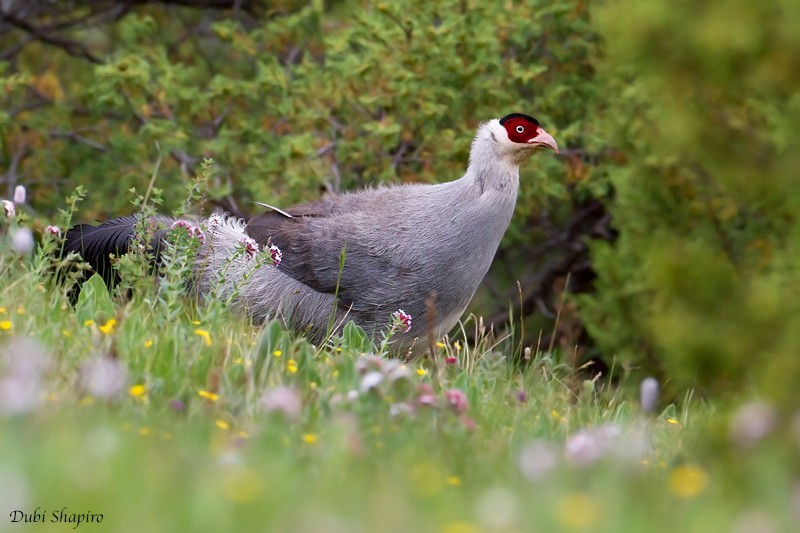White Eared Pheasant
A species of Eared-pheasants Scientific name : Crossoptilon crossoptilon Genus : Eared-pheasants
White Eared Pheasant, A species of Eared-pheasants
Botanical name: Crossoptilon crossoptilon
Genus: Eared-pheasants
Content
Description General Info
 Photo By Dubi Shapiro
Photo By Dubi Shapiro Description
The white eared pheasant (Crossoptilon crossoptilon), also known as Dolan’s Eared Pheasant or Bee's pheasant, is a species of "eared pheasant" that get its name because its colouration is white and has the prominent ear tufts of the genus, not because it has white ears. The indigenous people of Himalaya call it shagga, meaning snow fowl. This gregarious bird lives in large flocks, foraging on alpine meadows close to or above the snowline throughout the year. C. crossoptilon is found in China, Qinghai, Sichuan, Yunnan, and Tibet, where it tends to inhabit mixed forests and can be found around Buddhist monasteries. 
Size
96 cm
Nest Placement
Ground
Feeding Habits
White Eared Pheasant forage for tubers, roots, pine needles, and berries, adapting to winter scarcity with pitch and dung. They feed in alpine meadows, often alongside yaks.
Habitat
The 'white Eared Pheasant' thrives predominantly in subalpine coniferous forests, interspersed with oak, birch, and rhododendron, as well as in areas with dense juniper scrub. These birds are inclined to habitats that are in proximity to water sources, particularly during the winter months, and are known to forage in low-intensity farmland regions.
Dite type
Herbivorous
General Info
Feeding Habits
Bird food type
Species Status
The Szechuan white eared pheasant has now become a near-threatened species. Human development and encroaching on its habitat in agricultural China has reduced the range of the species, and hunting of these pheasants for food has threatened their numbers severely. An estimated 6,700 to 33,000 individuals exist in the wild today. C. crossoptilon is informally protected by the area’s Tibetan Buddhist culture. 

 Photo By Dubi Shapiro
Photo By Dubi Shapiro